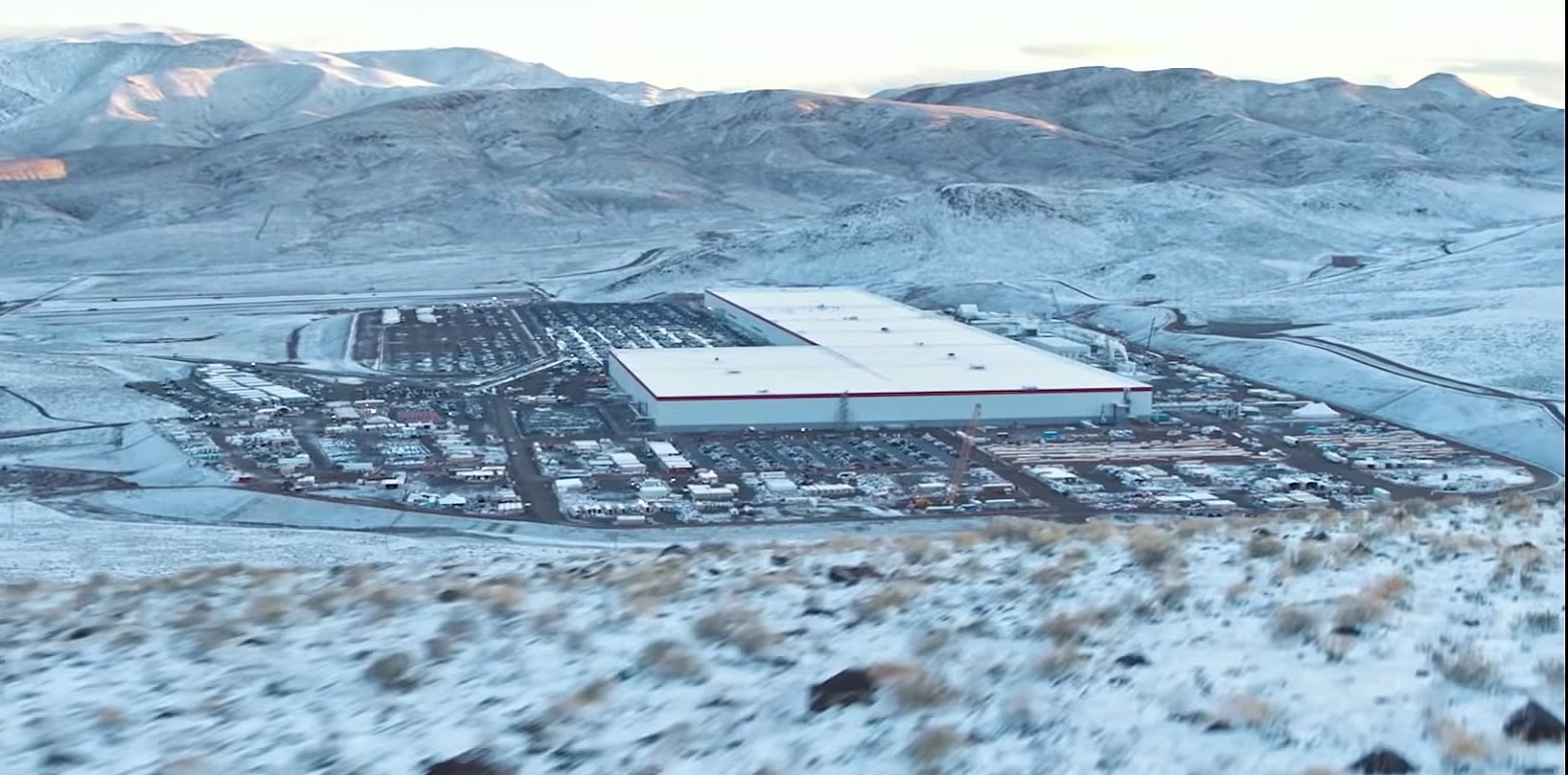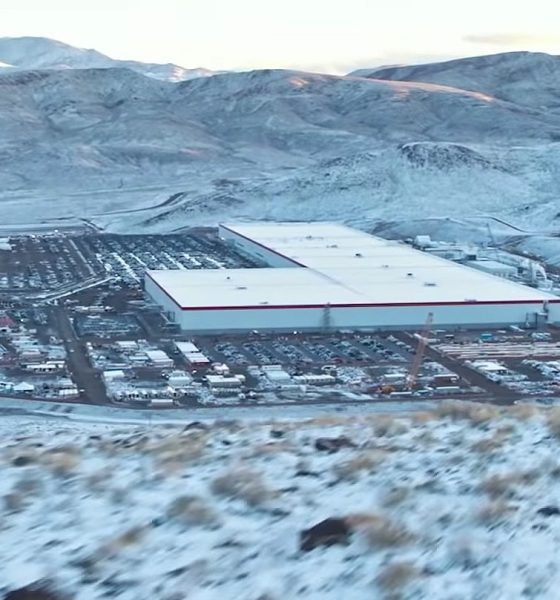

News
Tesla's battery acquisitions are paying off in spades, and giving rivals a lot of pain
There was a time, not too long ago, when Tesla skeptics questioned the company’s focus in designing and producing its own batteries with a dedicated partner like Panasonic and a facility like Gigafactory 1 in Nevada. Batteries, after all, are available off-the-shelf from companies like LG Chem, and it seemed pretty futile for Tesla to insist that it needs its own battery supply for its future business.
Fast forward to 2020, and Tesla’s extreme focus on battery development is paying off in spades. Over the years, Tesla has acquired multiple companies that have, in some way, enabled the company to accelerate or improve its products’ batteries. Included among these are Grohmann Automation, whose machines are the bread and butter in Gigafactory 1, Maxwell Technologies, and more recently, HIBAR systems.
At this point, Tesla’s batteries have pretty much become the gold standard for EVs, and the company appears to be well on its way towards releasing vehicles that have a range of 400 miles or more. The Plaid Model S and X will likely be the first of these, as well as the next-gen Roadster, which will have 620 miles of range. Even the reasonably-priced Cybertruck tops out at over 500 miles of range per charge. Massive battery developments are needed to achieve these, and Tesla seems to have done it, or at least is well on its way.
This does not appear to be true for other OEMs attempting to enter the electric vehicle market. As veteran companies unveiled their EVs, and as none have really managed to hold a candle to Tesla’s flagship Model S in terms of range, it is becoming evident that the electric car maker’s investments in batteries may have actually been the right strategy all along. Daimler, for one, seems to be feeling this inconvenient truth, with works council chief Michael Brecht explaining during a recent interview with Manager Magazin that Tesla’s battery-related acquisitions are actually having an effect on Germany’s EV efforts.
Daimler launched its first EV, the Mercedes-Benz EQC, in 2018, and it has not really lived up to the hype. Despite being dubbed at some point as a potential “Tesla Killer” due to its pedigree and excellent German build quality, the all-electric SUV has faced battery shortages and low sales. Registrations in Germany for the vehicle only show about 55 units sold to date despite all the ad campaigns dedicated to the SUV. Battery supply shortages have also forced Daimler to cut the annual production target of the EQC by 50% from 60,000 to just 30,000.
Quite interestingly, Brecht partly blames Tesla for some of the challenges facing the EQC today. Explaining his points to the publication, he argued that one of the reasons Daimler is struggling with battery demand is because Tesla bought Grohmann Engineering, which has valuable technology that could be used for battery-related developments and activities. Brecht also mentioned that Grohmann was actually hired by Mercedes-Benz to build up its own battery manufacturing capacity.
Brecht’s statements are notable since it is quite rare to see a veteran car manufacturer actually point the finger at Tesla to explain the dire condition of its own EV program. One can only hope that perhaps, the EQC would be a lesson that Daimler could learn from. After all, Daimler, among German automakers, would likely have no issues tapping into Tesla’s established technologies, batteries and powertrains alike, as the two companies have already worked together in the past. Elon Musk has stated that eventually, Tesla may be open to selling its batteries and powertrains with other OEMs. If this were to happen, it would be wise for Daimler to wait right in front of the line to avoid another EQC-sized flop.

News
Tesla FSD fleet is nearing 7 billion total miles, including 2.5 billion city miles
As can be seen on Tesla’s official FSD webpage, vehicles equipped with the system have now navigated over 6.99 billion miles.

Tesla’s Full Self-Driving (Supervised) fleet is closing in on almost 7 billion total miles driven, as per data posted by the company on its official FSD webpage.
These figures hint at the massive scale of data fueling Tesla’s rapid FSD improvements, which have been quite notable as of late.
FSD mileage milestones
As can be seen on Tesla’s official FSD webpage, vehicles equipped with the system have now navigated over 6.99 billion miles. Tesla owner and avid FSD tester Whole Mars Catalog also shared a screenshot indicating that from the nearly 7 billion miles traveled by the FSD fleet, more than 2.5 billion miles were driven inside cities.
City miles are particularly valuable for complex urban scenarios like unprotected turns, pedestrian interactions, and traffic lights. This is also the difference-maker for FSD, as only complex solutions, such as Waymo’s self-driving taxis, operate similarly on inner-city streets. And even then, incidents such as the San Francisco blackouts have proven challenging for sensor-rich vehicles like Waymos.
Tesla’s data edge
Tesla has a number of advantages in the autonomous vehicle sector, one of which is the size of its fleet and the number of vehicles training FSD on real-world roads. Tesla’s nearly 7 billion FSD miles then allow the company to roll out updates that make its vehicles behave like they are being driven by experienced drivers, even if they are operating on their own.
So notable are Tesla’s improvements to FSD that NVIDIA Director of Robotics Jim Fan, after experiencing FSD v14, noted that the system is the first AI that passes what he described as a “Physical Turing Test.”
“Despite knowing exactly how robot learning works, I still find it magical watching the steering wheel turn by itself. First it feels surreal, next it becomes routine. Then, like the smartphone, taking it away actively hurts. This is how humanity gets rewired and glued to god-like technologies,” Fan wrote in a post on X.
News
Tesla starts showing how FSD will change lives in Europe
Local officials tested the system on narrow country roads and were impressed by FSD’s smooth, human-like driving, with some calling the service a game-changer for everyday life in areas that are far from urban centers.

Tesla has launched Europe’s first public shuttle service using Full Self-Driving (Supervised) in the rural Eifelkreis Bitburg-Prüm region of Germany, demonstrating how the technology can restore independence and mobility for people who struggle with limited transport options.
Local officials tested the system on narrow country roads and were impressed by FSD’s smooth, human-like driving, with some calling the service a game-changer for everyday life in areas that are far from urban centers.
Officials see real impact on rural residents
Arzfeld Mayor Johannes Kuhl and District Administrator Andreas Kruppert personally tested the Tesla shuttle service. This allowed them to see just how well FSD navigated winding lanes and rural roads confidently. Kruppert said, “Autonomous driving sounds like science fiction to many, but we simply see here that it works totally well in rural regions too.” Kuhl, for his part, also noted that FSD “feels like a very experienced driver.”
The pilot complements the area’s “Citizen Bus” program, which provides on-demand rides for elderly residents who can no longer drive themselves. Tesla Europe shared a video of a demonstration of the service, highlighting how FSD gives people their freedom back, even in places where public transport is not as prevalent.
What the Ministry for Economic Affairs and Transport says
Rhineland-Palatinate’s Minister Daniela Schmitt supported the project, praising the collaboration that made this “first of its kind in Europe” possible. As per the ministry, the rural rollout for the service shows FSD’s potential beyond major cities, and it delivers tangible benefits like grocery runs, doctor visits, and social connections for isolated residents.
“Reliable and flexible mobility is especially vital in rural areas. With the launch of a shuttle service using self-driving vehicles (FSD supervised) by Tesla in the Eifelkreis Bitburg-Prüm, an innovative pilot project is now getting underway that complements local community bus services. It is the first project of its kind in Europe.
“The result is a real gain for rural mobility: greater accessibility, more flexibility and tangible benefits for everyday life. A strong signal for innovation, cooperation and future-oriented mobility beyond urban centers,” the ministry wrote in a LinkedIn post.
News
Tesla China quietly posts Robotaxi-related job listing
Tesla China is currently seeking a Low Voltage Electrical Engineer to work on circuit board design for the company’s autonomous vehicles.

Tesla has posted a new job listing in Shanghai explicitly tied to its Robotaxi program, fueling speculation that the company is preparing to launch its dedicated autonomous ride-hailing service in China.
As noted in the listing, Tesla China is currently seeking a Low Voltage Electrical Engineer to work on circuit board design for the company’s autonomous vehicles.
Robotaxi-specific role
The listing, which was shared on social media platform X by industry watcher @tslaming, suggested that Tesla China is looking to fill the role urgently. The job listing itself specifically mentions that the person hired for the role will be working on the Low Voltage Hardware team, which would design the circuit boards that would serve as the nervous system of the Robotaxi.
Key tasks for the role, as indicated in the job listing, include collaboration with PCB layout, firmware, mechanical, program management, and validation teams, among other responsibilities. The role is based in Shanghai.
China Robotaxi launch
China represents a massive potential market for robotaxis, with its dense urban centers and supportive policies in select cities. Tesla has limited permission to roll out FSD in the country, though despite this, its vehicles have been hailed as among the best in the market when it comes to autonomous features. So far, at least, it appears that China supports Tesla’s FSD and Robotaxi rollout.
This was hinted at in November, when Tesla brought the Cybercab to the 8th China International Import Expo (CIIE) in Shanghai, marking the first time that the autonomous two-seater was brought to the Asia-Pacific region. The vehicle, despite not having a release date in China, received a significant amount of interest among the event’s attendees.








